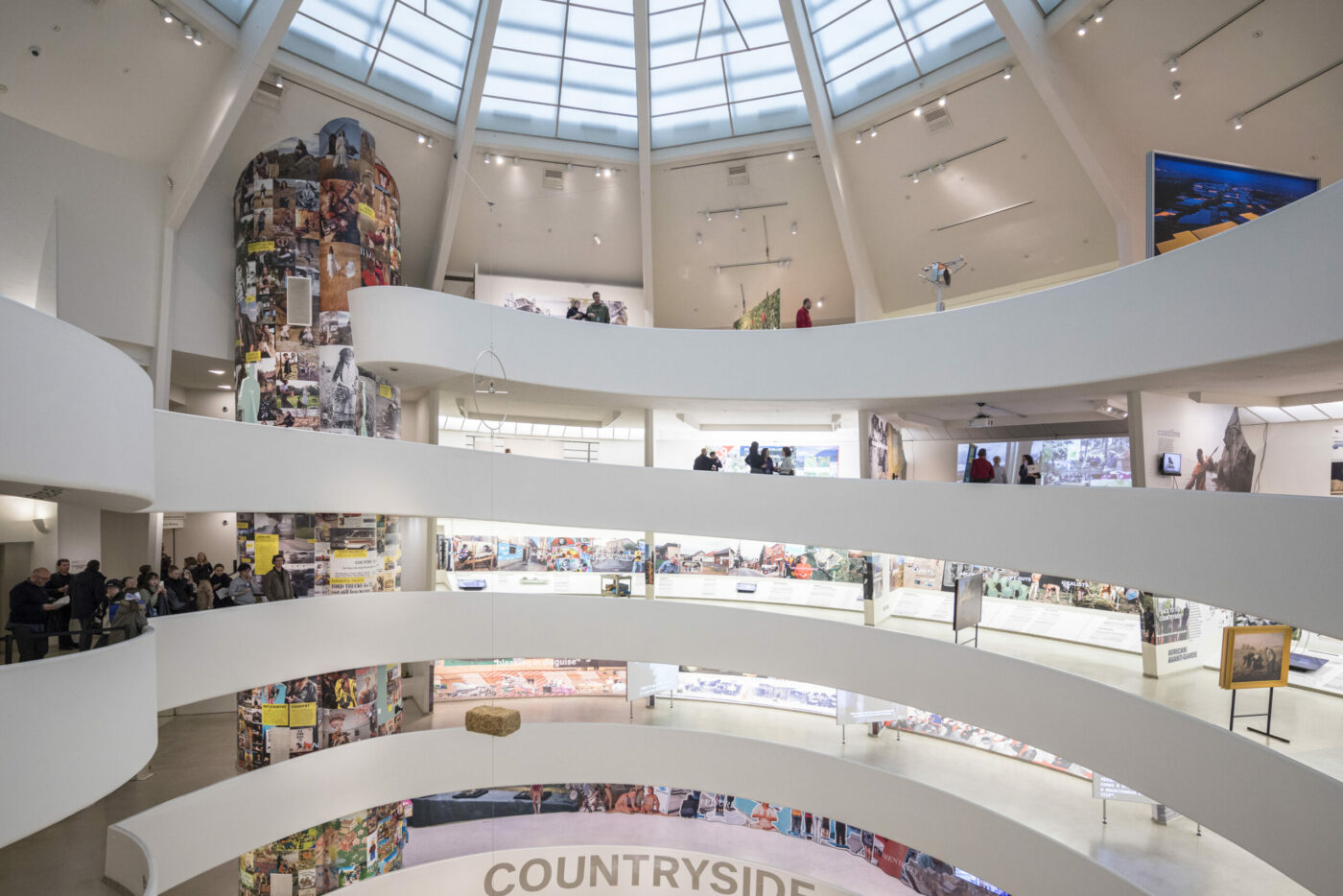
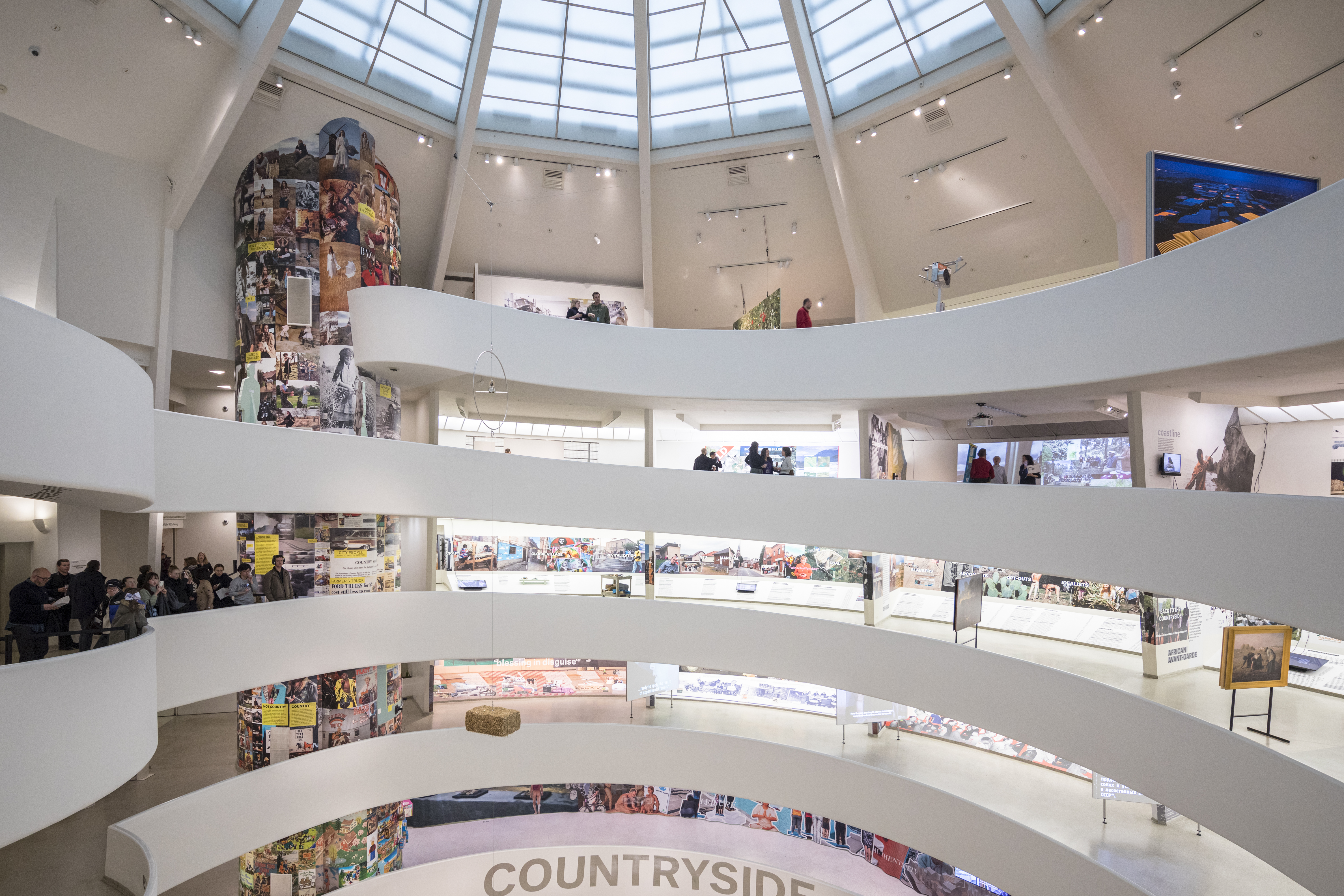
Rem Koolhaas cross interviewed by Christophe van Gerrewey, Arjen Oosterman and Christophe Catsaros on Countryside, The Future, the pandemic and architecture. Rotterdam, June 26th, 2020.
Christophe Catsaros: The project called Countryside initiated ten years ago is not exactly the same as the New-York exhibition. How would you describe the difference between the two projects, and can we imagine that the pandemic could once again change the focus of your thesis on the countryside?
Rem Koolhaas: Ten years ago, I was communicating a moment of personal conversion. Or more precisely: a strong intuition that extreme focus on the urban condition no longer made sense, and that ‘things’ were happening in the countryside that needed attention, that I did not understand well. That was the beginning of a shift… It was personal, unlike the actual exhibition that is far more collaborative. Countryside, The Future is based on the contribution of 15 ‘reporters’ who were asked to explore and describe very specific conditions all over the world, in their own words, their own language and their own arguments. It’s a synthesis – more of an orchestration than a personal statement.
Another difference between the initial and the latest version had to do with the undeniable ways in which, in the last ten years, the combination of city and neoliberalism seems to create an infernal inequality machine. This discomfort is intensified by the growing influence of tech companies shaping the urban condition and setting many of its key parameters, such as the integration of technological elements in architecture, resulting in the model of the smart city as an apotheosis of urban culture.
Christophe van Gerrewey: Was there a moment when the Guggenheim became important in the project, when you knew you were making an exhibition for this institution and this building? Does the fact that Countryside, The Future is placed in an art museum have any influence?
RK: The Guggenheim asked me to do this exhibition four years ago. From that moment on what was initially a ‘research’ became an exhibition project. It’s not the first time we staged an exhibition in an art environment. Unlike what we did in Berlin in the Nationalgalerie, in 2004 with Content, in this case we were more tempted to use the conventions implied by the architecture. The Guggenheim is a challenging place to stage an exhibition, setting up an imposing form of interaction with a single spiral wall.
There is the cliché that architects working in the Frank Lloyd Wright building must engage in some sort of dialogue with the masterpiece. Jean Nouvel painted it black, and Zaha Hadid did also something quite ambitious. In all those cases, an architect seems obliged to react to the architecture of the place by radically transforming it. We decided to simply use the ramp as a very convenient tool, to interpret it as a brilliant device to connect independent episodes.
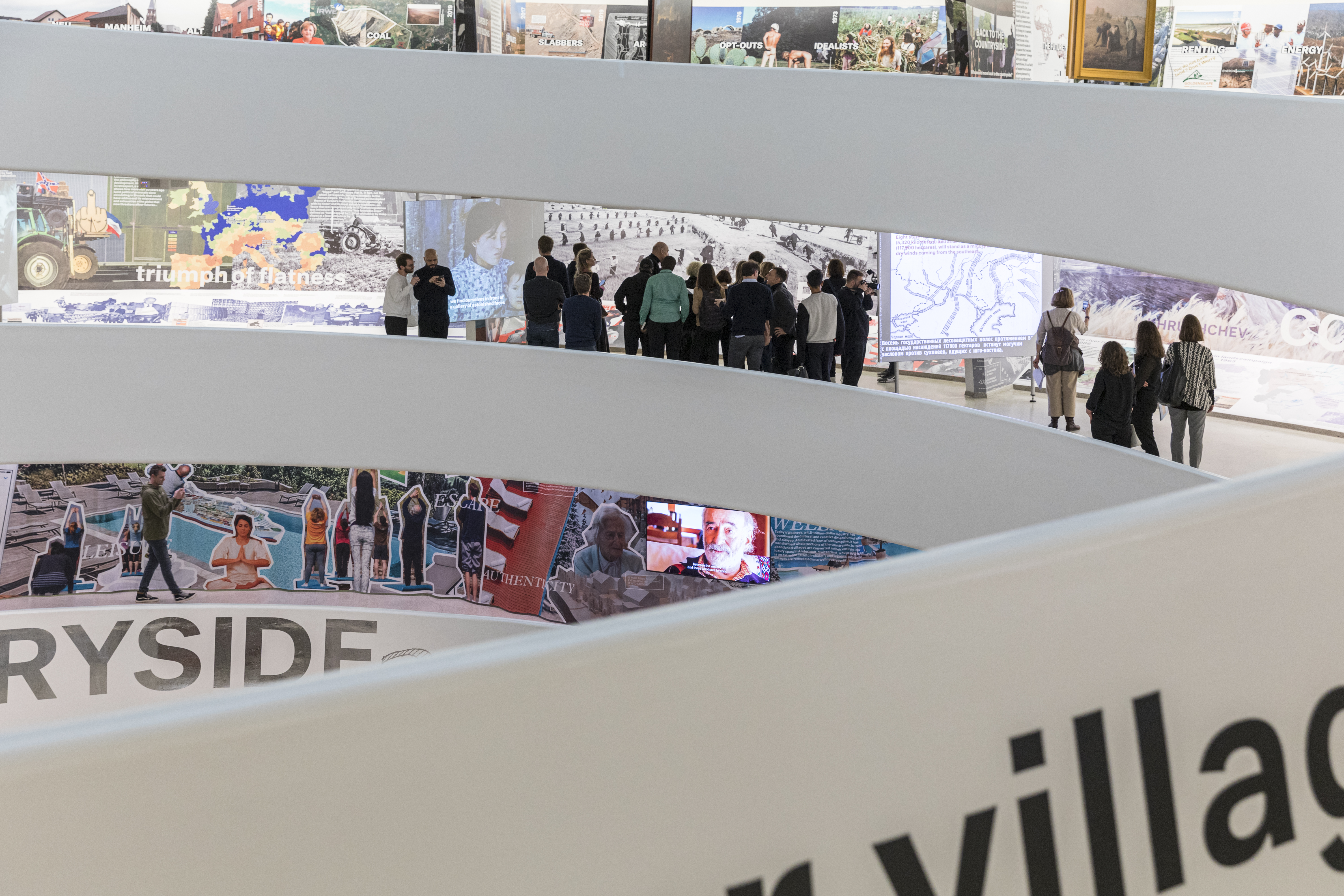
CC: What are the chances of seeing this exhibition in Europe, considering the corona crisis, the decrease in private sponsorship, and more generally the amounts allocated for major public exhibitions?
RK: Arc en rêve in Bordeaux is committed to take over the exhibition. If we do it in Bordeaux, it would be interesting to do something on Bordeaux too. The role of expats in promoting local and organic winemaking is a possibility. The relation between winemaking, landscape and artificiality also may be interesting to work on.
Moreover, coming to Bordeaux could be an opportunity to collaborate with Sébastien Marot, whose exhibition Taking the Country’s Side is somehow linked to ours. Sébastien was part of the Harvard studio teaching effort in Rotterdam. We were always considering that the two projects could eventually merge.
There is interest in Africa, in Russia, and in China… there is so much material that we can always make different selections, emphasize different issues, develop further collaborations and insights.
Arjen Oosterman: Why the difference in the title of the exhibition (Countryside, The Future) and the catalogue (Countryside, A Report)?
RK: In the catalogue, we wanted to underline the significance of reporting, by making sure it’s not confused with research. If it’s called a report, it’s immediately clear what the status of the individual contribution is.
AO: Which of the two titles relates to the traveling aspect of the project, is it the future or the report?
RK: Both. One of my preoccupations in the last 25 year, has been to abandon Eurocentrism in architecture by introducing other subjects, such as ‘Lagos’ and exposing other forms of architectural thinking, such as the Metabolists in ‘Project Japan.’ How to be a convinced European, almost a fanatical one, and yet to have the intimate intention to kill eurocentrism. In that sense, both the reporting aspect and the more demonstrative exhibition format, work together.
AO: That seems directly related to the fact that contemporary culture has become very inward looking, politically speaking. This project tries to break up that situation.
RK: Take the face mask issue and the polemic regarding their use in different parts of Europe. Ten years ago, people were laughing at Japanese people wearing face masks. At the beginning of the pandemic, people were saying face masks were useless. Then French doctors started to analyze the effect of using face-masks and finally concluded that using face-masks reduces contamination by 90%. That explains the success of Asian metropoles in fighting the pandemic. For me it shows that Europe is fundamentally insecure, not convinced of its superiority anymore, but still eager to hang on to its appearance… in order to deny our emerging inferiority, we have to denigrate the rest of the world.
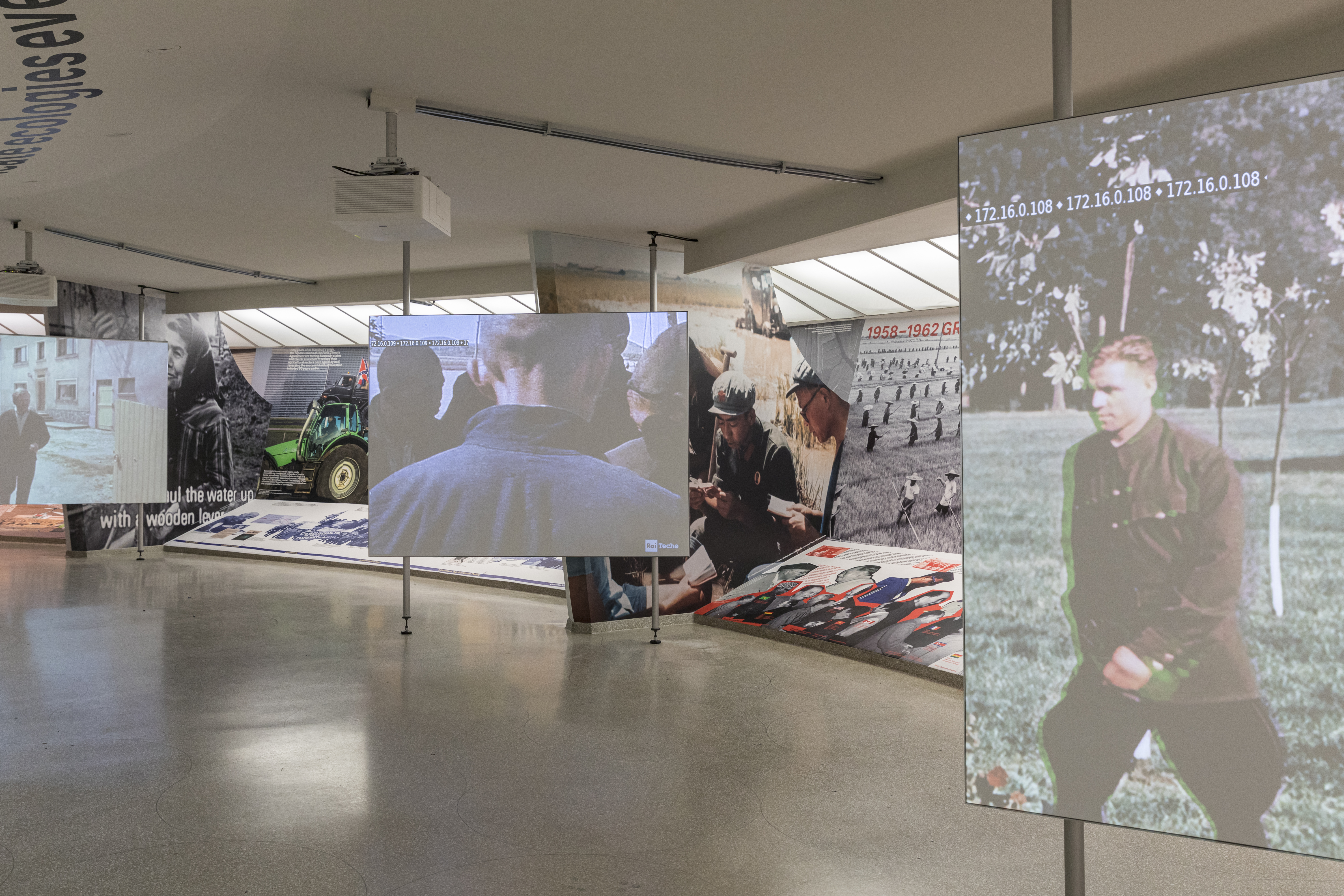
CC: Often you intentionally seem to defend positions contrary to the commonly accepted opinion. Today, China is increasingly described as a technological driven dictatorship, yet you insist on showing there are bottom up processes taken place, rooted in local public life.
RK: There is life in China, and there is creativity in China.
The so-called end of history contains a paradox: we were triumphant and at the same time surrounded by evidence that we were entering a period of decline and of shrinking credibility. During the cold war, at least there was a lot of knowledge of the ‘enemy’, but since 1991, we have deliberately turned our back on that kind of intelligence. We’re relying on opinion, not on knowledge. Just take a look at how few Russian or Chinese intellectuals are invited to speak in the western world, or at the scarcity of European students in China. It’s just a fraction of what it ought to be.
CvG: Can a sincere interest in non-European regions benefit Europe? Is that too opportunistic, or is it a matter of learning from China?
RK: I definitely think so. It’s a question of learning to collaborate. There are many interesting initiatives taking place also in Africa. There are things happening in parts of the Middle East, in Russia, and it would be a mistake not to take them into consideration. That is the underlying tone of the whole exhibition. Please collaborate, find reasons to engage with each other.
CvG: Is the presence of Stalin in the exhibition an invitation to reconsider the role of certain historical figures in regard to the countryside?
RK: I wanted to show that the 20th century is characterized by massive territorial interventions, some launched by dictatorships, others by democracies. For instance, the initial period of the European Union’s Common Agricultural Policy coincided with Mao’s Great Leap Forward.
The agricultural transformation taking place at the end of the 1950s in Europe and China was quite similar: the same increase in scale, and mechanization. Roosevelt, Stalin after the war, Mansholt for the EU, Saddam Hussein: most rulers, whether dictatorial or democratically elected, had an intense conviction that the development of the countryside was crucial for the future of their countries. Part of the ‘neglect’ I mention, is the almost complete absence of that ambition only decades later.
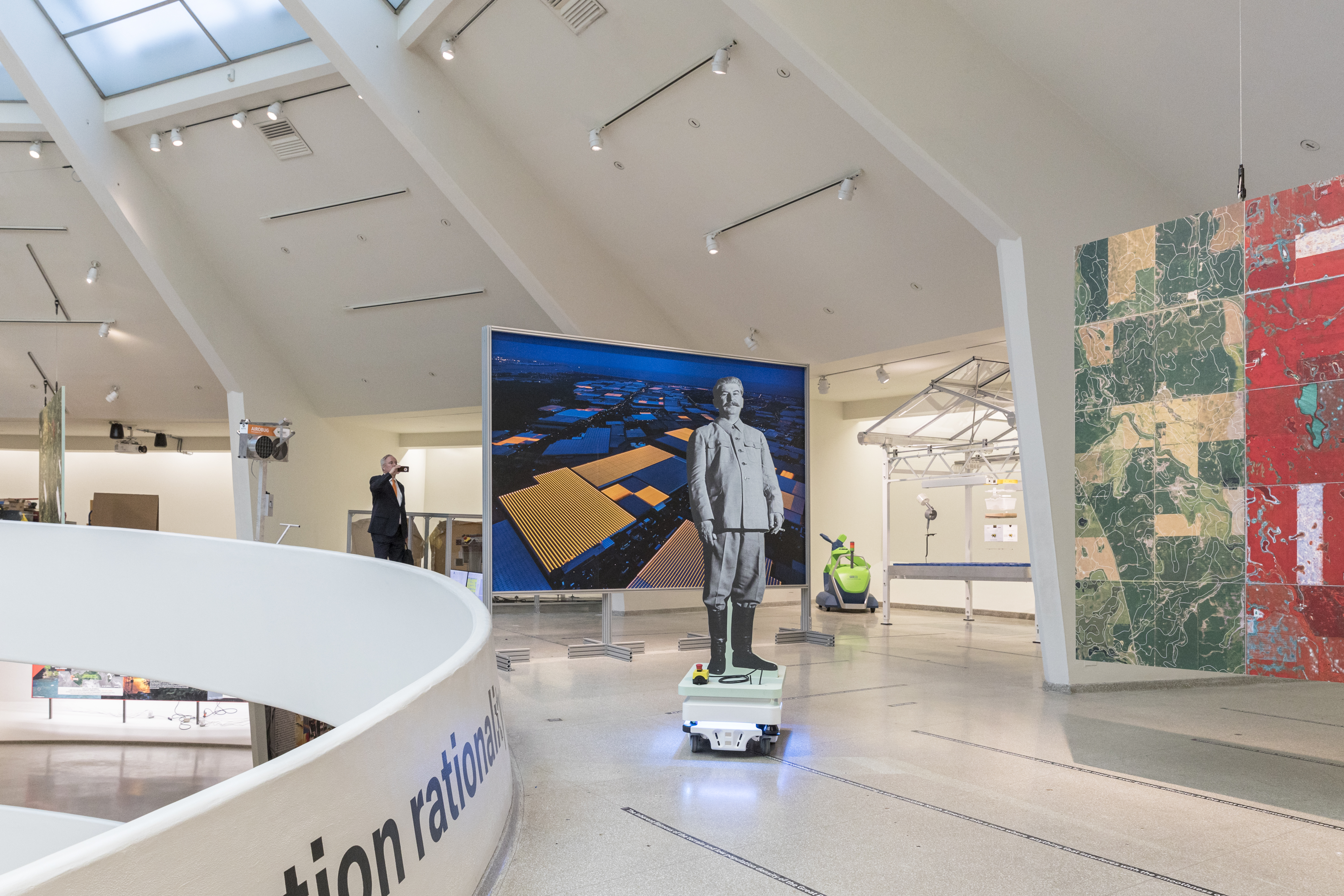
CC: This retrospective look on the great agrarian reforms of dictators relates to a scale of intervention in land planning that is no longer regional or national, but rather continental. Is it an incentive to reconsider massive action, especially in the context of global warming? Should our own leaders be inspired by the dictators of the 20th century to make a difference?
RK: That is definitely the point of the whole argument: today, an equivalent effort is necessary. There are two maps in the exhibition synthesizing what needs to be done in order to counteract global warming. It consists of a huge effort that combines intelligent transformation and intelligent preservation. I think that is ultimately the message of the exhibition.
CvG: There is this famous Le Corbusier quote on Colbert in La ville radieuse from 1933: “Aujourd’hui on ne peut rêver qu’à un homme, c’est à Colbert. Agir entreprendre réaliser! – Today you can only dream of one man, that’s Colbert. To act, to undertake, to realize!” Maybe you’re saying we need a sort of ecological Colbert on a global level?
RK: I wouldn’t put it that rhetorically. I was just showing there are processes going on, and many people are already working on these matters. The aim of this display of knowledge and planning is to start taking seriously a range of thinking that is not sufficiently acknowledged and recognized. That ignorance is definitely related to our lives in the comfort of our urban bubble.
It’s not so much about being against the city, but acknowledging the fact that cities engender a certain blindness through their physical manifestation. It’s a very self-satisfied culture and an intellectual framework that ignores everything that surrounds it.
AO: In general, the countryside is of course defined by the city. Without the city, one wouldn’t talk of the countryside. It’s a notion that is very much related to the city.
RK: The dialectical distinction between city and countryside was still valid in the last century, but it has been suspended. Very strong motivation for the show was the forecast that by 2030, 80% of mankind will be living in cities on 2% of the territory, depending on the 20% remaining in the countryside for the ‘maintenance’ of 98% of the territory… That is obviously insane. That cannot be tolerated because it will completely destabilize and ultimately destroy everything. The exhibition is a statement against this perspective.
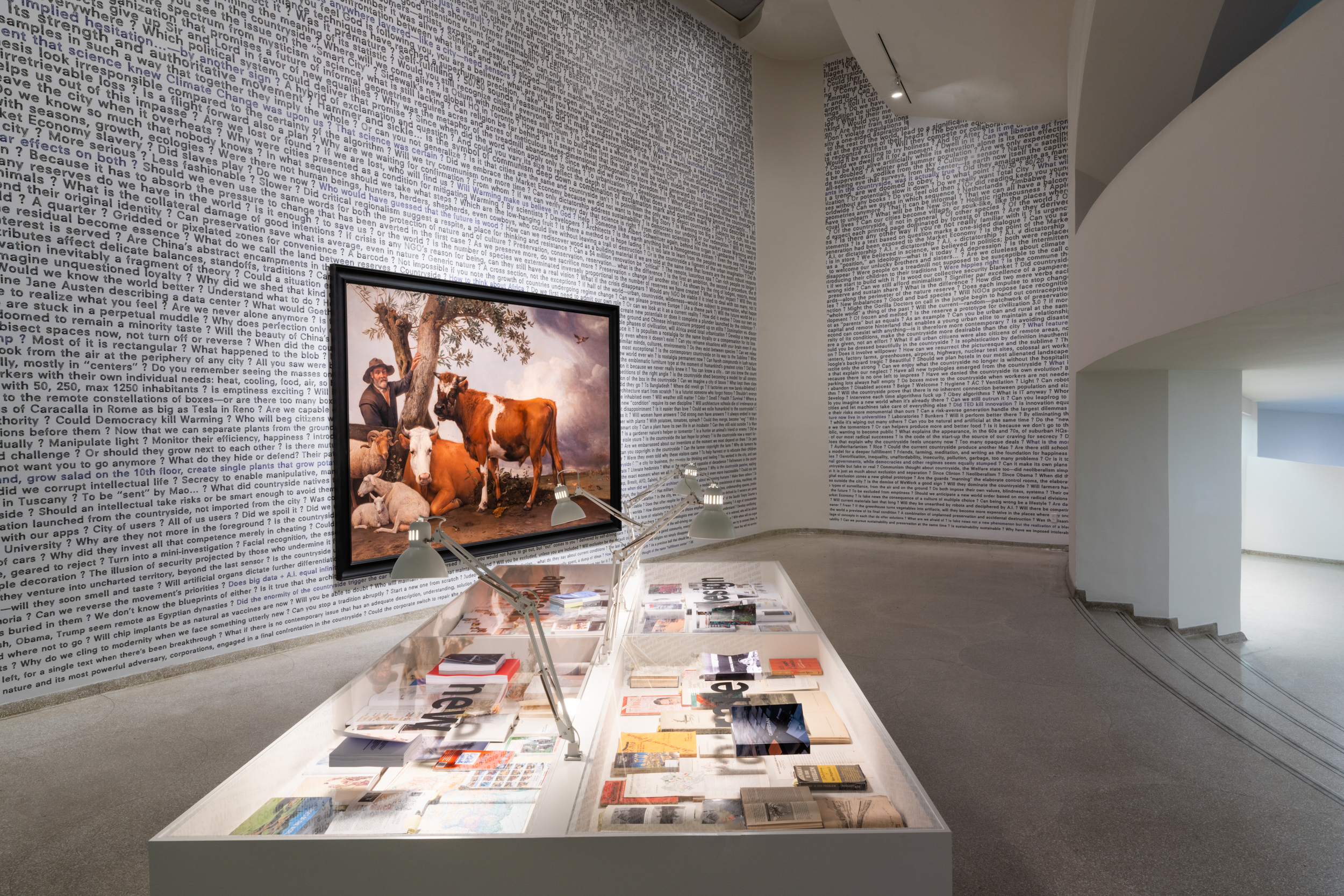
AO: The depopulation of the countryside seems to be a general notion, on a political level, and as far as planning is concerned. Concentration is a thing of the city. The pandemic seems to overthrow this dynamic by making the countryside a desirable option again. People are reconsidering their urban condition.
RK: One has to be very careful. l ’m not aligning myself with that kind of simplistic reversal. What is more interesting is for instance the way in China or Africa, the urban condition is not exclusive. Being a city dweller doesn’t mean you cut off your ties with the countryside. There is a continuing involvement for city dwellers back in their hometown. In Nairobi for example, successful professionals also invest in the village they come from. They’re buying land, preparing their retirement. Similar patterns exist in China… What we’re looking for are ways of being less radical in disconnecting the urban and the non-urban condition.
CC: Is the inferiority of the countryside a cultural construction, and is the exhibition an invitation to sublimate rurality? Is it necessary to work on the imagination of the countryside? A narrative concerning the city has been developed ever since the second half of the 18th century, by means of literature and cinema, for example.
RK: Yes, certainly. There is a very beautiful Soviet movie showing the process of harvesting, depicting an almost orgasmic pleasure of living together on the earth and creating something bigger. There is indeed a strong need to define a contemporary ‘identity’ and even ‘esthetic’ for the countryside. In the exhibition, this quest is represented in the satellite pictures of farming, or in the pixel agriculture plans. The need for a new kind of gaze reinforced the choice of doing this project in an art museum. At the Guggenheim, these new representations acquire greater power than they would have had in an architectural environment.

CvG: Isn’t there a risk that searching for an aesthetics or a culture of the countryside will never escape the metropolitan perspective?
RK: The risk is there. The metropolis has a kind of gravity that makes it very difficult to escape from. But the point is not to invent an entirely new conception: the crucial issue for me is to reestablish connections, to restore a dialectic between city and countryside. And in this effort, all means are permitted… an aesthetic of the countryside has always existed – think of the writings of Robert Walser, for example, or Goethe’s Wahlverwandschaften.
CvG: It might also help to find an epithet. More than 40 years ago, you attached adjectives like delirious and sparkling to the metropolis?
RK: Those terms might have come from a more youthful self-confidence, and I don’t necessarily want to repeat past formulas, but I think that considering the title of my contribution to the catalogue, an appropriate adjective could be ignored.
CC: The exhibition ends with pixel farming: an experimental process elaborated at Wageningen University, the leading agricultural institute of the Netherlands, trying to figure out ways to combine the principles of permaculture and algorithmic engineering.
Contrary to the viewpoints of radical ecology, this quest for an intensive and sustainable agriculture is driven by the conviction that the solution cannot come from degrowth. Downsizing the world is not an option. Instead, increasing sustainable agriculture is considered possible thanks to intensive farming.
RK: Downsizing and completely reversing the course of progress implies abandoning a kind of promethean ambition. Without this ambition, the prospect of entropy opens up.
CvG: Will there still be, in the end, a difference between a smart city and the smart countryside?
RK: I wouldn’t use the term smart for the countryside. The exhibition ends with an image of a nuclear fusion plant under construction. A process that was completely unrealistic ten years ago, in which there have been serious breakthroughs in the last decade. The technology of fusion is one of the reasons not to abandon our faith in the technological option. But without the permaculture component, it wouldn’t work either. Neither one can survive by itself. Technology and ecology are meant to work together.

AO: You have been discussing these issues with Louise Fresco, president of Wageningen University. What is her take on the global food production in relation to the permaculture notion?
RK: Louise Fresco is a scientist. Those who believe in science, and most scientists do, don’t despair that the world can generate enough food. It’s a matter of where and how. Wageningen University is concerned with agriculture already for 200 years. They are quite engaged in figuring out ways to replace meat proteins. From their point of view, there is no reason to worry.
CvG: We might worry over the current corona crisis, though – how it came about, and how it can reinforce a lot that’s already quite bad about the world.
RK: Yes, maybe, but from another point of view: this pandemic has shown how easy it can be to completely change the world. Could you imagine air-travel would ever halt? In two months’ time, we have proven more flexible than we thought we were. Look at the way consensus was reached, and resources were liberated to achieve certain aims, concerning care and safety. If one third of what we have spent on the pandemic would be used on dealing with climate change, it could be solved. The pandemic redefined the range of what is ‘possible’.
CC: How is it going to change the way we work? With the generalization of remote working, should we consider that business districts and office buildings will become the next disused industrial halls? Are office towers the next brownfields?
RK: After two months of remote working, we definitely rediscovered the value of assembling to work. We need to get together to spark and to confront – to sort our way out of dilemmas. This is almost impossible in a virtual situation, and I’m confident this will remain a necessity.
Offices will be more geared toward interaction than individual work, but that was already happening before the pandemic.
CvG: Imagine this lockdown in the nineties… Internet enabled us to go through this crisis with less consequences. The impact would have been larger if this would have happened two or three decades ago.
RK: So the pandemic happened at the right moment? We did have a project in Moscow, and we were able to deal with incredible details through remote meeting… That ability is quite interesting. So, we’ll probably keep on doing both: remote work and assembling. We’ll definitely also keep on traveling.
CC: The crisis might also affect how we define the metropolitan condition. The city has always been closely linked to the hypothesis of its own destruction. The effective destruction of Berlin, for example, during WW2, determined its future. Do you foresee how urbanism will evolve?
RK: It’s too early to tell, but I’m convinced that parts of architectural knowledge are becoming obsolete. I also think that the distinction to be made is not so much between creation and destruction… it’s more about redefining ‘necessity’; what is truly necessary? the intelligence required for architecture is constantly changing. The Venice Biennale we curated in 2014 tried to stage the shrinking of architectural possibilities: the margin of architectonic intervention has shrunk to a minimal range. Even if your range is limited, you still can act on it.
CvG: Are you considering building in the countryside?
RK: I am sure ‘Countryside’ implies a very diverse agenda for architecture… from involvement in ecological repair, agriculture, rural technologies to post-human architecture. I’m trying to find opportunities but so-far with no success. It’s hard to advertise a new interest while also proclaiming your lack of experience. I’m drastically pursuing greater involvement in agriculture. I would even consider getting involved with Wageningen University.
CvG: The City of the Captive Globe wasn’t a commission either.
RK: At that time, drawing had a kind of impact, but that has completely changed. Now I ‘m trying to do the same through this exhibition. Claim interest in a particular zone with the hope of developing it.